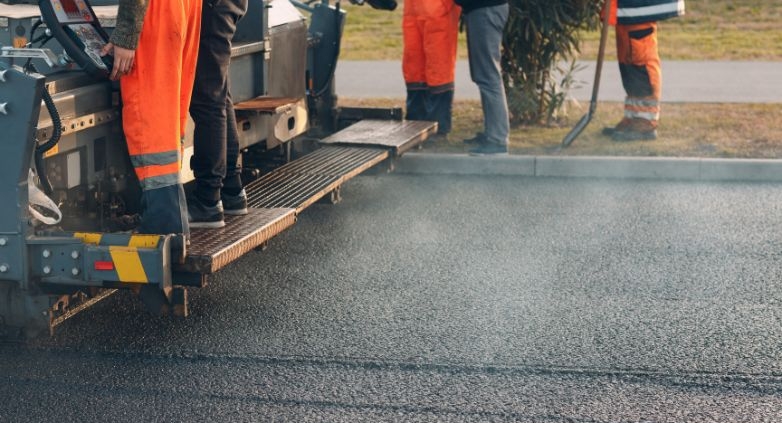Smooth Sailing: Engineering and Design Principles for Optimal Road Smoothness in Asphalt Paving
by siteadmin

Smooth roads are more than just a pleasure to drive on; they’re also safer, more fuel-efficient, and longer-lasting. Achieving optimal road smoothness requires careful engineering and design considerations throughout the asphalt paving process. In this blog post, we’ll explore the key principles and techniques used by engineers to ensure smooth and durable asphalt pavements that enhance driving experiences and maximize pavement longevity.
Proper Subgrade Preparation:
The foundation of any smooth asphalt pavement is a well-prepared subgrade. Engineers begin by assessing the existing soil conditions and ensuring proper compaction to achieve uniform support for the pavement structure. Adequate drainage measures are also implemented to prevent water infiltration and subgrade weakening, which can lead to pavement deformation and roughness over time.
Gradation of Aggregates:
The gradation of aggregates used in asphalt mixtures plays a crucial role in determining the smoothness and durability of the pavement surface. Engineers carefully select aggregates of appropriate sizes and proportions to achieve optimal particle packing and interlock. Well-graded aggregates with a balanced distribution of particle sizes result in a smoother, more stable pavement surface that resists rutting and cracking.
Asphalt Mix Design:
The composition of the asphalt mixture is carefully engineered to meet performance requirements for smoothness, durability, and traffic loadings. Engineers consider factors such as aggregate type, asphalt binder content, and additives to optimize the mix design for specific project conditions. By selecting the right combination of materials and proportions, engineers can achieve a dense, homogeneous asphalt mixture that promotes smoothness and long-term performance.
Proper Compaction Techniques:
Effective compaction is essential for achieving uniform density and smoothness throughout the asphalt pavement layer. Engineers utilize state-of-the-art compaction equipment and techniques to achieve optimal compaction levels and eliminate voids within the asphalt matrix. Rolling patterns, roller speed, and compaction temperature are carefully controlled to ensure consistent compaction across the pavement surface.
Quality Control and Assurance:
Rigorous quality control measures are implemented throughout the asphalt paving process to monitor and maintain the desired level of smoothness and quality. Engineers conduct regular inspections, material testing, and performance evaluations to identify any deviations from design specifications and address them promptly. By maintaining strict quality control standards, engineers can ensure that the finished pavement meets or exceeds smoothness requirements and delivers superior performance over its service life.
Surface Treatment and Maintenance:
Proactive surface treatments and maintenance practices are essential for preserving the smoothness and longevity of asphalt pavements. Engineers may recommend techniques such as sealcoating, crack sealing, and periodic resurfacing to protect the pavement surface from environmental and traffic-related wear and tear. By addressing surface defects and distresses early on, engineers can prevent the onset of roughness and extend the life of the pavement.
Achieving optimal road smoothness in asphalt paving requires a holistic approach that encompasses proper subgrade preparation, aggregate gradation, asphalt mix design, compaction techniques, quality control, and ongoing maintenance. By adhering to engineering and design principles that prioritize smoothness and durability, engineers can deliver asphalt pavements that provide safe, comfortable, and efficient driving experiences for motorists while maximizing pavement longevity and sustainability. Smooth roads not only enhance the quality of life for communities but also contribute to safer and more sustainable transportation systems for generations to come.
Smooth roads are more than just a pleasure to drive on; they’re also safer, more fuel-efficient, and longer-lasting. Achieving optimal road smoothness requires careful engineering and design considerations throughout the asphalt paving process. In this blog post, we’ll explore the key principles and techniques used by engineers to ensure smooth and durable asphalt pavements that…
Recent Posts
- Balancing Act: Environmental Impact and Sustainability in Asphalt Paving
- Smooth Moves: Asphalt Paving Maintenance Strategies for Sustaining Smoothness
- Innovating Asphalt Paving: Exploring Advanced Asphalt Mix Design Methodologies
- The Importance of Pothole Repair: Health Impacts of Pothole-Related Accidents
- Understanding Chemical Exposure and Its Impact on Asphalt Degradation
